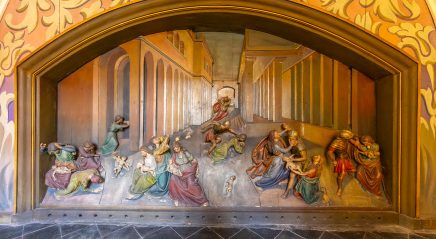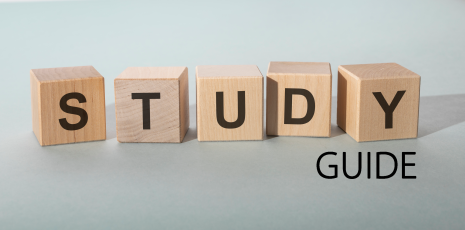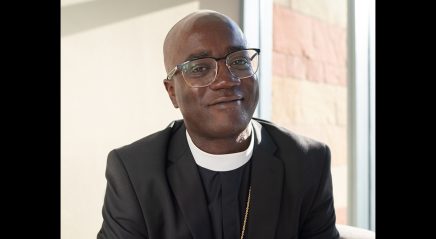This story was published in the January 2016 issue of The Lutheran magazine.
Yoga is popping up everywhere. Yoga studios on every corner. Yoga pants in every store. Yoga classes at every gym. It’s a fitness regimen growing like wildfire. But yoga isn’t a new craze or passing fad – it’s a thousands-year-old practice that is more than fitness. It’s a practice for our whole selves – body, mind and spirit.
Many people like to set resolutions or intentions for the new year. If you resolved to exercise or pray more in 2016, you’re in luck – with yoga you can do both. The intention of yoga is to find union for our body, mind and spirit. In doing so, it provides an opportunity for union with something much greater than ourselves – with the Divine.
As a yoga instructor and studio owner, I see each day how this practice changes students for the better – certainly physically but even more so mentally.
Yoga has eight limbs (components), but only one of them is about the poses themselves. The other seven limbs speak to moral and ethical ways of living and then draw us purposefully toward deeper concentration and meditation. Practicing yoga invites us into something deeper, into a moving meditation, into yoga as prayer.
Why not pray with our whole bodies? Why not pray with our whole selves? Mark 12:30 commands us to “love the Lord your God with all your heart, and with all your soul, and with all your mind, and with all your strength.” We know from 2 Samuel 6:14 that “David danced before the Lord with all his might.” Yoga creates the opportunity to pray with our whole selves.
While this practice is not connected to one religion (there is historical evidence that yoga as a tradition predates religion; see “Yoga as a religion?” at www.yogajournal.com), it’s definitely a tool for deepening faith.
Try this simple routine to promote better health, calmness, mental clarity and regular prayer. Start with three times a week and increase to daily as you are able. You can practice yoga at any time, but many people find a short sequence like this to be a perfect way to start the day. You don’t need a lot of space, or even a yoga mat, just a quiet spot in your home with a little room to move.
Read each Bible verse silently or aloud before you enter the pose. If a particular word or phrase speaks to you, repeat it as a mantra during the pose.
O God, you are my God, I seek you, my soul thirsts for you; my flesh faints for you, as in a dry and weary land where there is no water. (Psalm 63:1)
Begin lying on your back, draw the soles of your feet together and let your knees fall out wide into “supta baddha konasana” (bound angle pose). Place your hands on your stomach and begin to breathe deeply. Feel your belly rise and fall with each breath.
Now bring some intention to your breath: inhale through your nose and exhale through your nose. Inhale to the count of four, then pause at the top of your breath. Exhale to the count of four and pause at the bottom of your breath.
Do this three to five more times before lengthening your breath to the count of five and then to six.
Remember with every respiration that the Spirit is called the “Breath of God” and that in Ezekiel 37 God breathed life into dry bones. With every inhalation, invite God to breathe life into your dry bones. With every exhalation, let go of each care or concern that leaves you feeling dried out.
So I have looked upon you in the sanctuary, beholding your power and
glory. (Psalm 63:2)
Come to standing, with your hands together at your heart in prayer position, preparing for “surya namaskar” (sun salutation).
As you inhale, reach your hands to the sky into “tadasana” (mountain pose) and as you exhale, fold toward the earth into “uttanasana” (forward fold).
Inhale up to a flat back, lifting up halfway, hands on your shins and drawing your shoulder blades down your back.
Exhaling, place both hands on the floor, step your feet back to the top of a push-up position. Then press your palms into the mat and lift your hips high into “adho mukha svasana” (downward facing dog). Your body will look like an upside down “V.” Take three deep breaths.
On your last exhale, step forward and repeat this sequence three to five times.
Because your steadfast love is better than life, my lips will praise you. So I will bless you as long as I live; I will lift up my hands and call on your name. (Psalm 63:3-4)
Next, move into “vrksasana” (tree pose). From a standing position, ground down to the earth with your left foot and press your right foot up anywhere along the inside of your left leg, from your ankle to your inner thigh, avoiding your knee. You might feel more comfortable keeping your hands at prayer position near your heart or you may choose to reach your hands toward the sky and turn your face to the heavens.
Hold for five breaths and then repeat on the other side with your left leg.
My soul is satisfied as with a rich feast, and my mouth praises you with joyful lips when I think of you on my bed, and meditate on you in the watches of the night; for you have been my help, and in the shadow of your wings I sing for joy. My soul clings to you; your right hand upholds me. (Psalm 63:5-8)
Finish your prayer time in “viparita karani” (feet up the wall pose), lying on your back with your hips touching the wall and your feet over you resting on the wall. Allow your breath to be full and easy, your hands resting gently alongside your body. When you feel ready, roll onto your side and come to a seated position. Bring your hands to your heart in a gesture of prayer. End your time by saying, “Amen.”
Once this sequence becomes familiar, you may wish to expand your practice. You can use these poses with any Scripture verses you choose. You can also seek out yoga classes at local studios, gyms or your park district. Yoga practices can also be found on YouTube and DVD.






